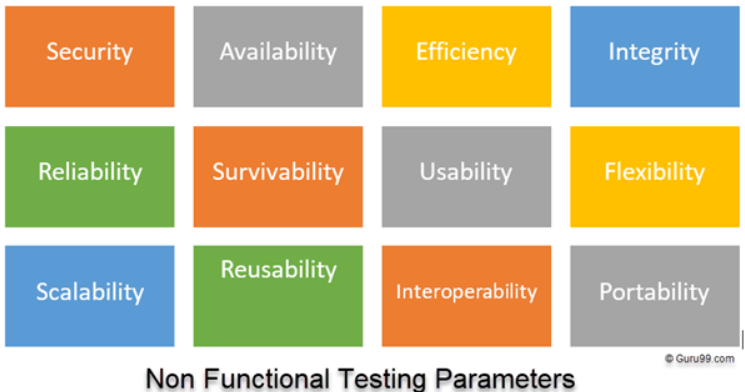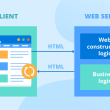What is Functional Testing?
Functional testing is a type of software testing that verifies that a system meets its required results. In other words, functional testing checks to see if the software is doing what it’s supposed to do. This can be done manually or automatically. Functionality can be tested at the unit, integration, and system level. Some common functional tests include usability testing, compatibility testing, security testing, and recovery testing. Functional testing is an important part of the software development process because it ensures that the software works as intended and meets the needs of the users. When done properly, functional testing can help to improve the quality of the software and reduce the number of bugs.
Types of Functional Testing

Source: naukri.com
Smoke Testing
Smoke testing is a type of functional testing that is used to determine whether the software application under test is stable enough to proceed with further more detailed testing. The objective of smoke testing is to diagnose any software defects as early as possible or, in other words, uncover any showstopper defects that would prevent the software from being deployed into production. Smoke testing is typically performed early in the software development cycle, immediately after builds or code changes are received from developers. Smoke tests are typically run prior to regression tests and can be executed manually or through automation.
There are two types of smoke tests:
1) Installation smoke testing – performed after code changes or new builds are received to verify that the application can be installed successfully on the target environment
2) Build Verification Testing (BVT) – performed after each build to ensure that the new build does not contain any critical defects that would prevent it from being deployed in production
Smoke testing is an important part of the software development process as it helps to ensure that applications are stable enough to proceed with further more detailed testing. Uncovering showstopper defects early on can save considerable time and effort later in the development cycle.
Sanity Testing
Sanity testing is a type of functional testing that is used to verify that a new software build does not contain any obvious errors and that it is stable enough to be tested further. This type of testing is typically conducted after a new build has been received from development and before it is released to the rest of the testing team. The goal of sanity testing is to ensure that the new build is testable and does not contain any major bugs that would prevent further testing from being conducted.
To conduct sanity testing, testers will typically create a small subset of tests that cover the most important functionality of the software. These tests are then run against the new build to verify that the software is functioning as expected. If any major issues are found, the build is typically rolled back and returned to development for further work. Otherwise, the build can be released to the rest of the testing team for more comprehensive functional testing.
Integration Testing
Integration testing is a type of functional testing that is used to test the interfaces between components or systems. It is important to perform integration testing because it helps ensure that the components or systems can work together as expected. There are many different ways to approach integration testing, but one common approach is to start with unit testing and then move on to integration testing once the units have been shown to work correctly.
This approach allows for more efficient use of resources and can help to prevent problems from occurring later in the development process. Integration testing can be performed manually or automatically, and it is often performed using a combination of both approaches.
Regression Testing
Regression testing is a type of functional testing that is used to verify that changes to the software have not adversely affected its functioning. This can include changes to the code, as well as to the environment in which the software is running. Regression tests are typically run after any significant change to the code base, and they are often used to catch bugs that were introduced by the change.
In order to be effective, regression tests must be comprehensive, covering all areas of the code that could potentially be affected by the change. They must also be repeatable so that they can be run again after future changes are made. By following the guidelines, regression testing can help ensure that changes to the software do not break existing functionality.
Localization Testing
When developing software for a global market, it is important to consider the different regional preferences and expectations of users around the world. To ensure that your software meets these expectations, you need to perform localization testing.
Localization testing is a type of functional testing that focuses on verifying that the software functions correctly in a specific locale. This includes verifying that the software can handle differences in currency, date/time formats, and language. It also involves testing to ensure that the user interface is suitable for the target audience and that any text that is displayed is properly translated. By performing localization testing, you can be confident that your software will be well-received by users in any market.
User Acceptance Testing
User Acceptance Testing (UAT) is a type of Functional Testing that occurs at the end of the software development cycle. Its purpose is to ensure that the software meets the business requirements of the customer or client. UAT is typically conducted by the end-users or business stakeholders. It involves checking that the system performs as expected and that the user interface is intuitive and easy to use. While UAT is a crucial step in the software development process, it can be challenging to get right.
In order to ensure a successful UAT, it is important to involve all stakeholders in the planning and execution phases. Furthermore, clear and concise test cases should be created that cover all functionalities of the system. Finally, adequate time should be allocated for UAT so that any issues can be identified and resolved before go-live.
Alpha testing
After preparing the individual product modules, they are combined into a single whole. This is not a finished version yet, but it is already able to work and performs its main tasks (sometimes partially). This version of the program is called the alpha version.
Alpha testing is a type of acceptance testing that is usually carried out at a late stage of product development and involves simulating the actual use of the product by in-house developers or a team of testers. Typically, alpha testing consists of systematic testing of all program features using white-box and black-box testing strategies.
Alpha testing is a methodology for assessing the quality and stability of a product under test in a test environment.
Beta testing
When the alpha version of the product is finished, the beta version is released. It is a real working version of the program with full functionality.
Beta testing is basically an intensive use of an almost finished version of the product. It is done to identify the maximum number of errors in its operation for their subsequent elimination before the final release of the product to the market.
Beta testing is a real working version of the program with full functionality. The task of beta tests is to evaluate the capabilities and stability of the program from the point of view of its future users. Therefore, unlike alpha testing, beta testing involves the involvement of volunteers from among the usual future users of the product.
What is Non-Functional Testing?
Non-functional testing is a type of testing that checks for the system’s compliance with non-functional requirements. These requirements are usually not related to any specific function or feature of the system. Instead, they deal with properties like performance, scalability, security, etc. Non-functional testing is essential to ensure that the system can handle the load and perform as expected under real-world conditions. Without non-functional testing, it would be difficult to know if the system will be able to cope with an increase in traffic or users. Furthermore, non-functional testing can also help to identify potential bottlenecks and performance issues. As a result, it is an essential part of any software development process.
Types of Non-Functional Testing

Source: guru99.com
Performance Testing
Performance testing is a type of non-functional testing that focuses on how a system responds to a given workload. In general, performance testing seek to answer two key questions: how quickly can the system complete a given task, and how well does it scale when increasing the number of users or requests? To accurately simulate realistic conditions, performance tests are typically conducted using automated test tools. This allows for repeatable and consistent results. Common metrics include response time, throughput, and resource utilization. By understanding the performance characteristics of a system, businesses can ensure that their applications will meet user expectations in terms of speed and scalability.
Usability Testing
Usability testing is a type of non-functional testing that assesses how user-friendly a software application is. In other words, it measures how easy it is for users to accomplish their goals using the application. Usability testing is important because it can help to identify user experience issues that could prevent users from achieving their goals. For example, if users find an application confusing or difficult to use, they may give up on using it altogether. As a result, usability testing can play a key role in ensuring that software applications are easy and enjoyable to use.
Usability testing typically involves having test users complete various tasks using the application under test. The testers then observe and assess the users’ performance in order to identify any areas for improvement. Usability testing can be performed manually or with the help of specialized software tools. Either way, it is an essential part of ensuring that software applications are user-friendly and fit for purpose.
Security Testing
Security testing is a type of non-functional testing that helps to ensure that an application is secure from potential threats. There are many different types of security threats that can be exploited, such as SQL injection attacks and cross-site scripting attacks. Security testing can help to identify these potential threats and mitigate them before they cause any damage. In order to properly test for security vulnerabilities, it is important to have a solid understanding of how the application works and how it is accessed. Once this information is gathered, security testers can use various tools and techniques to check for weaknesses.
Some common tools used in security testing include penetration testing and vulnerability scanners. By running these tests on a regular basis, organizations can help to ensure that their applications are safe from potential attacks.
Scalability Testing
Scalability testing is another non-functional testing type that measures the performance of a network or system as the number of user requests increases or decreases. The goal of scalability testing is to ensure that the application can handle the predicted increase in user traffic, data volume, transaction count rate, and so on. It tests the ability of the system, processes, and databases to meet growing demand.
It also focuses on the behavior of the application when deployed to a larger system or tested under excessive load. In software engineering, scalability testing is measuring at what point an application stops scaling and identifying why.
Failover and Recovery Testing
This testing validates the product for its ability to withstand and successfully recover from possible failures due to software errors, hardware failures, or communication problems (such as network failure). The purpose of this type of testing is to check recovery systems so that they will ensure the safety and integrity of the data of the tested product.
Failover and recovery testing is essential for 24/7 systems. If you are creating a product that will work, for example, on the Internet, then you simply cannot do without this type of testing. Because every minute of downtime or data loss in the event of a hardware failure can cost you money, customers, and reputation in the market.
Final Thoughts
Functional and non-functional testing are both essential to the success of any software project. Functional testing helps to ensure that the system works as expected, while non-functional testing helps to identify potential bottlenecks and performance issues. By conducting regular tests on a variety of different areas, businesses can help to ensure that their applications are safe from potential threats and perform well under real-world conditions. Choose your testing methods for the success of your next project!








